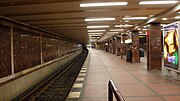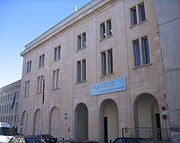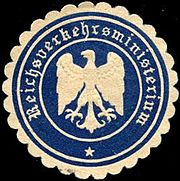Borsig Palace
The Borsig Palace was an iconic building at the corner of Voßstraße and Wilhelmstraße in the center of Berlin and one of the grandest Italianate villas in Germany. Completed in 1877 for industrialist Albert Borsig, who died before he could move in, the building served for a time as a bank. In 1933 it became the residence of Vice-Chancellor Franz von Papen, where dramatic scenes relating to the Night of the Long Knives would play out just one year later. In the aftermath, Palais Borsig was converted into the new headquarters of the Sturmabteilung on Adolf Hitler's direct orders. It was then integrated into the New Reich Chancellery by Albert Speer in 1938. The palace was severely damaged in World War II and, together with Hitler's Chancellery, demolished by the Soviet forces in 1947.













